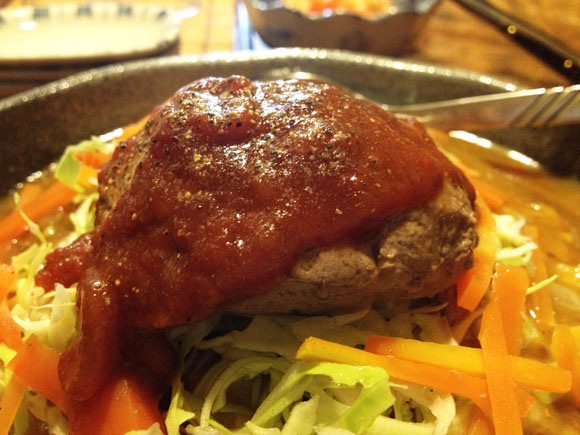
It’s not every day that you hear of a dish whose ingredients include a chemical element.
When most people hear of cesium, they probably think of either high school chemistry class or, if you happened to be glued to the TV during last year’s nuclear disaster in Fukushima, the element’s association with radiation…
So when a restaurant in central Tokyo openly advertising a lunch-time curry featuring a “cesium burger” came to our attention, we had to check it out.
Our brave food reporter Kuzo headed into town to find out whether the rumours were true and, if they were, to see what on earth a meal featuring a potentially hazardous chemical substance could taste like…
Here in Japan, hanbaagu (hamburg) and hanbaagaa (hamburger) are two very different things. While most westerners would refer to a hamburger as such regardless of whether the patty is sandwiched between buns or not, in Japan the two are treated quite differently, and have different names to indicate as much.
In places like McDonald’s, for example, you eat a hanbaagaa, i.e. a meat patty between two buns. If you’re sitting down to, say, a Japanese curry or rokomoko that contains a hamburger steak, however, you’re eating hanbaagu, which is a patty without buns. For the purposes of this article, we’ll be referring to the latter.
When I first arrived in Japan I had no idea that a beef patty minus its buns could be quite so popular. It’s surprising just how versatile a circle of ground beef can be, with many family restaurants in Japan offering page after page of hanbaagu dishes with various toppings and sauces.
▼The beef patty menu from Big Boy Japan
Feeling hungry yet? How about that cesium burger?
“As I approached the shop and saw the sign, I saw that, sure enough, they were advertising that their hamburger steak as ‘containing cesium’,” recalls our foodie Kuzo.
The little shop, going by the name of AIUEO (from the Japanese syllabary, not unlike “AEIOU” in English), had recently launched a “Disaster recovery hamburger steak” and “Disaster recovery hamburger curry rice” dish, and was offering both for just 650 yen each (US$8). Both dishes contain hamburger patties made from beef raised in Iwate prefecture, north of Sendai, which was severely affected by the 2011 earthquake and tsunami. Like other meat and produce produced in the region post-Fukushima, the beef is reported to contain traces of the chemical.
▼AIUEO in Tokyo
The owner of the little restaurant, told our reporter that the two dishes were both very popular, and was happy to say that she often sold out of both. But why on earth advertise the fact that the dishes contain cesium? Was this just some bizarre way of drumming up custom?
The proprietor of the restaurant explained why she listed the chemical as an ingredient in the food:
“The beef patties really do contain traces of cesium. Since the amount of the substance in the meat is well below the ‘safe’ amount determined by the government, we technically don’t have to mention that there’s any in there. But the supplier of the patties felt that saying nothing just because the law dictates we don’t have to wasn’t right, so, even though they’re perfectly safe to eat, we decided to make it plain- these hamburgers contain cesium.”
▼”Recovery hamburger: made from Iwate beef, contains cesium: 650 yen”
If you’re sitting there open-mouthed (and not with hunger!) then don’t worry; you’re not on your own. Does this kind of thing happen often!?
Our reporter explains that food suppliers with this degree of frankness concerning what’s in their products are indeed rare, but recalls reading a news story just recently in which a similar supplier faced tough criticism after marking the contents of his food as containing traces of cesium. Stating that “we can’t say that the chemical element is not present”, the manufacturer took the extra step of adding labels to his meat that minute traces of the cesium may be present.
It’s scary to think that we may not normally know exactly what’s in the food we eat, and this is without a doubt a strange move for a restaurant to make, but we have to admire AIUEO’s frankness. Perhaps with a few more free spirits like these, we may gradually become a little bit more aware of what we’re putting into our bodies and take the power out of the hands of our respective governments.
“No doubt many people, having heard that their food is not entirely ‘clean’ would be put off, but just because it’s not normally stated so plainly doesn’t mean that a small (but safe) amount of things like cesium aren’t present in the food we consume each day,” Kuzo rationalised before settling in to try the reviving curry hamburger dish.
So how was it? Did our man struggle to get through the meal after reading its questionable ingredients? Not at all:
“It had a real home-cooked taste to it; soft, juicy and so very welcoming. A genuinely heart-warming dish.”
Menu image (C) Big Boy Japan
[ Read in Japanese ]

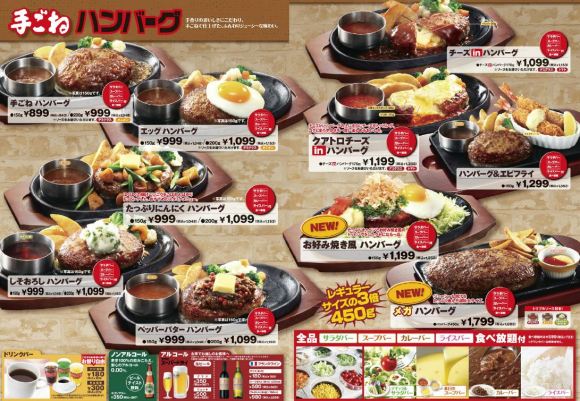
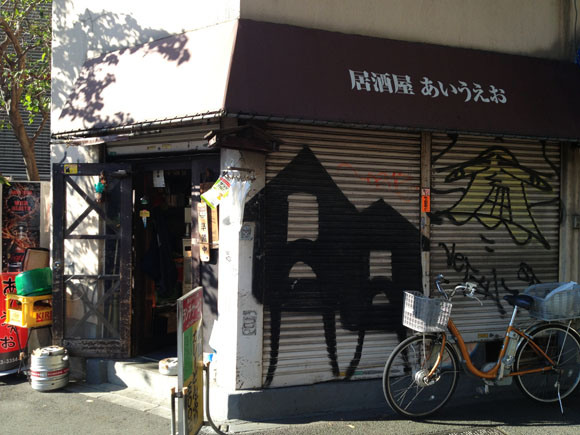
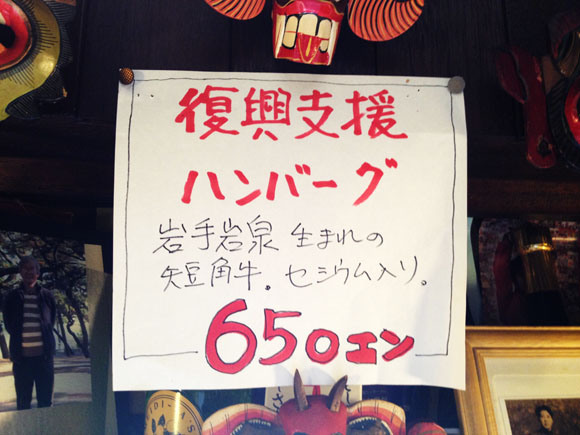
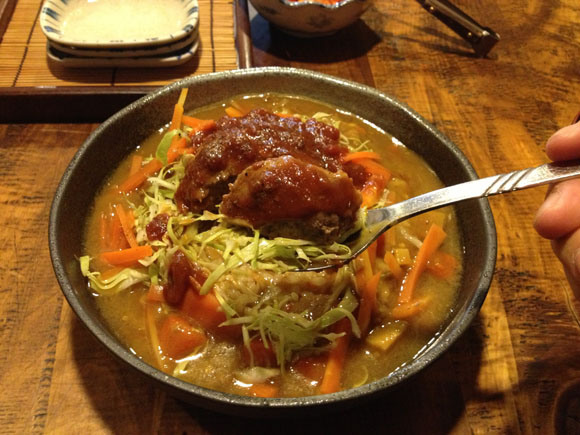
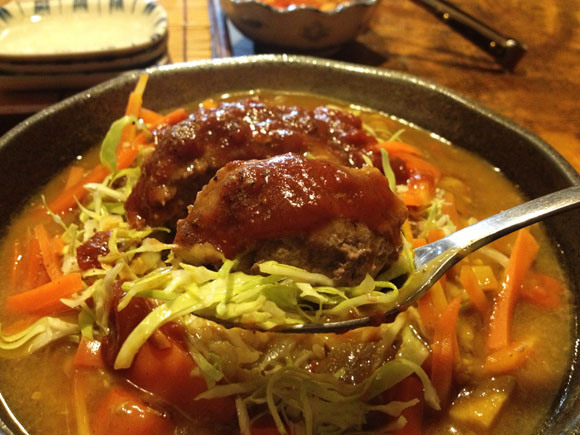
 Tokyo custom hamburger steak restaurant is all about choices, and all of them are delicious
Tokyo custom hamburger steak restaurant is all about choices, and all of them are delicious Our Japanese Reporter Eats Donut Burger in Search of “Real” American Hamburger, “I never want to eat that again”
Our Japanese Reporter Eats Donut Burger in Search of “Real” American Hamburger, “I never want to eat that again” Adventures in Morocco: Our Japanese language reporter orders a hamburger, gets a surprise
Adventures in Morocco: Our Japanese language reporter orders a hamburger, gets a surprise Japan’s fried curry hamburger is here, and not quite like anything we’ve eaten before【Taste test】
Japan’s fried curry hamburger is here, and not quite like anything we’ve eaten before【Taste test】 We try Burger King Japan’s CooKING Burger @Home, use up lots of stuff in our fridge
We try Burger King Japan’s CooKING Burger @Home, use up lots of stuff in our fridge Japanese beef bowl chain Sukiya’s 2026 Smile Box lucky bag basically pays for itself
Japanese beef bowl chain Sukiya’s 2026 Smile Box lucky bag basically pays for itself Village Vanguard’s most expensive Black Lucky Bag sets an ominous tone for 2026
Village Vanguard’s most expensive Black Lucky Bag sets an ominous tone for 2026 Should you dip your cake in sake? One Japanese brewer says no, but actually yes【 Taste test】
Should you dip your cake in sake? One Japanese brewer says no, but actually yes【 Taste test】 Terrace House star Hana Kimura’s suicide proceeding as a criminal case
Terrace House star Hana Kimura’s suicide proceeding as a criminal case That time Seiji called JASRAC to ask why he didn’t get paid royalties for his song being on TV
That time Seiji called JASRAC to ask why he didn’t get paid royalties for his song being on TV Draw like a Studio Ghibli anime artist with exclusive watercolour set approved by Hayao Miyazaki
Draw like a Studio Ghibli anime artist with exclusive watercolour set approved by Hayao Miyazaki Ice cream in fried tofu? Taste-testing ice cream inari, a substitute for ice cream cones【Taste test】
Ice cream in fried tofu? Taste-testing ice cream inari, a substitute for ice cream cones【Taste test】 Cancelled your trip to Tokyo? Free papercraft download lets you build Akihabara in your own home
Cancelled your trip to Tokyo? Free papercraft download lets you build Akihabara in your own home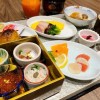 Ginza hotel serves up one of the best breakfasts in Tokyo
Ginza hotel serves up one of the best breakfasts in Tokyo Tour a stylish, minimalistic Muji House in new downtown Tokyo showroom
Tour a stylish, minimalistic Muji House in new downtown Tokyo showroom Starbucks Japan ready to get Year of the Horse started with adorable drinkware and plushies【Pics】
Starbucks Japan ready to get Year of the Horse started with adorable drinkware and plushies【Pics】 Hayao Miyazaki says Happy New Year to Studio Ghibli fans with new art for Year of the Horse
Hayao Miyazaki says Happy New Year to Studio Ghibli fans with new art for Year of the Horse 7 great places to see Mt. Fuji from without having to climb it
7 great places to see Mt. Fuji from without having to climb it We found possibly the quietest Japanese-style hotel in Tokyo’s bustling Shinjuku district
We found possibly the quietest Japanese-style hotel in Tokyo’s bustling Shinjuku district Cup Noodle tries an authentic Jiro-style ramen, but something’s not quite right
Cup Noodle tries an authentic Jiro-style ramen, but something’s not quite right Hello Kitty Choco Egg figures are an adorable trip through three periods of Japanese pop culture【Pics】
Hello Kitty Choco Egg figures are an adorable trip through three periods of Japanese pop culture【Pics】 Japan’s oldest largetooth sawfish in captivity back on display in Mie Prefecture
Japan’s oldest largetooth sawfish in captivity back on display in Mie Prefecture Cyberpunk anime meets traditional culture in Ghost in the Shell gold leaf Japanese changing screens
Cyberpunk anime meets traditional culture in Ghost in the Shell gold leaf Japanese changing screens The best Starbucks Japan Frappuccinos we want to drink again in 2026
The best Starbucks Japan Frappuccinos we want to drink again in 2026 We revisited Sweets Paradise after a decade to see if Japan’s dessert buffet still delivers
We revisited Sweets Paradise after a decade to see if Japan’s dessert buffet still delivers 7-Eleven Japan starts new temporary luggage storage service in over 300 branches
7-Eleven Japan starts new temporary luggage storage service in over 300 branches Disillusionment at Tsukiji’s tourist-target prices led us to a great ramen restaurant in Tokyo
Disillusionment at Tsukiji’s tourist-target prices led us to a great ramen restaurant in Tokyo Starbucks teams up with 166-year-old Kyoto doll maker for Year of the Horse decorations【Photos】
Starbucks teams up with 166-year-old Kyoto doll maker for Year of the Horse decorations【Photos】 Tokyo considering law requiring more trash cans following litter increase in heavily touristed area
Tokyo considering law requiring more trash cans following litter increase in heavily touristed area Tokyo’s Tsukiji sushi neighborhood asks tour groups to stay away for the rest of the month
Tokyo’s Tsukiji sushi neighborhood asks tour groups to stay away for the rest of the month Tokyo event lets you travel back in time, for free, to celebrate 100 years since Showa era start
Tokyo event lets you travel back in time, for free, to celebrate 100 years since Showa era start Sanrio theme park in Japan announces plans to expand into a Sanrio resort
Sanrio theme park in Japan announces plans to expand into a Sanrio resort Japan may add Japanese language proficiency, lifestyle classes to permanent foreign resident requirements
Japan may add Japanese language proficiency, lifestyle classes to permanent foreign resident requirements Stamina-destroying “Paralysis Noodles” are Tokyo’s newest over-the-top ramen innovation
Stamina-destroying “Paralysis Noodles” are Tokyo’s newest over-the-top ramen innovation Survey asks foreign tourists what bothered them in Japan, more than half gave same answer
Survey asks foreign tourists what bothered them in Japan, more than half gave same answer Japan’s human washing machines will go on sale to general public, demos to be held in Tokyo
Japan’s human washing machines will go on sale to general public, demos to be held in Tokyo Japan’s deadliest food claims more victims, but why do people keep eating it for New Year’s?
Japan’s deadliest food claims more victims, but why do people keep eating it for New Year’s? We deeply regret going into this tunnel on our walk in the mountains of Japan
We deeply regret going into this tunnel on our walk in the mountains of Japan Studio Ghibli releases Kodama forest spirits from Princess Mononoke to light up your home
Studio Ghibli releases Kodama forest spirits from Princess Mononoke to light up your home Major Japanese hotel chain says reservations via overseas booking sites may not be valid
Major Japanese hotel chain says reservations via overseas booking sites may not be valid Put sesame oil in your coffee? Japanese maker says it’s the best way to start your day【Taste test】
Put sesame oil in your coffee? Japanese maker says it’s the best way to start your day【Taste test】 No more using real katana for tourism activities, Japan’s National Police Agency says
No more using real katana for tourism activities, Japan’s National Police Agency says Starbucks Japan reveals new sakura drinkware collection, inspired by evening cherry blossoms
Starbucks Japan reveals new sakura drinkware collection, inspired by evening cherry blossoms Updated cherry blossom forecast shows extra-long sakura season for Japan this year
Updated cherry blossom forecast shows extra-long sakura season for Japan this year Our Reporter Picks up 1kg Curry Rice for Half Price, Wades His Way Through It
Our Reporter Picks up 1kg Curry Rice for Half Price, Wades His Way Through It We try a delicious pancake burger from Eggs ‘n Things in Tokyo
We try a delicious pancake burger from Eggs ‘n Things in Tokyo
Leave a Reply